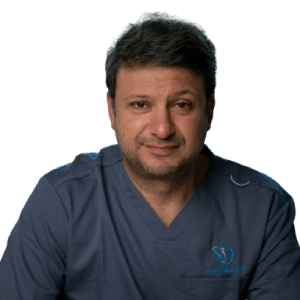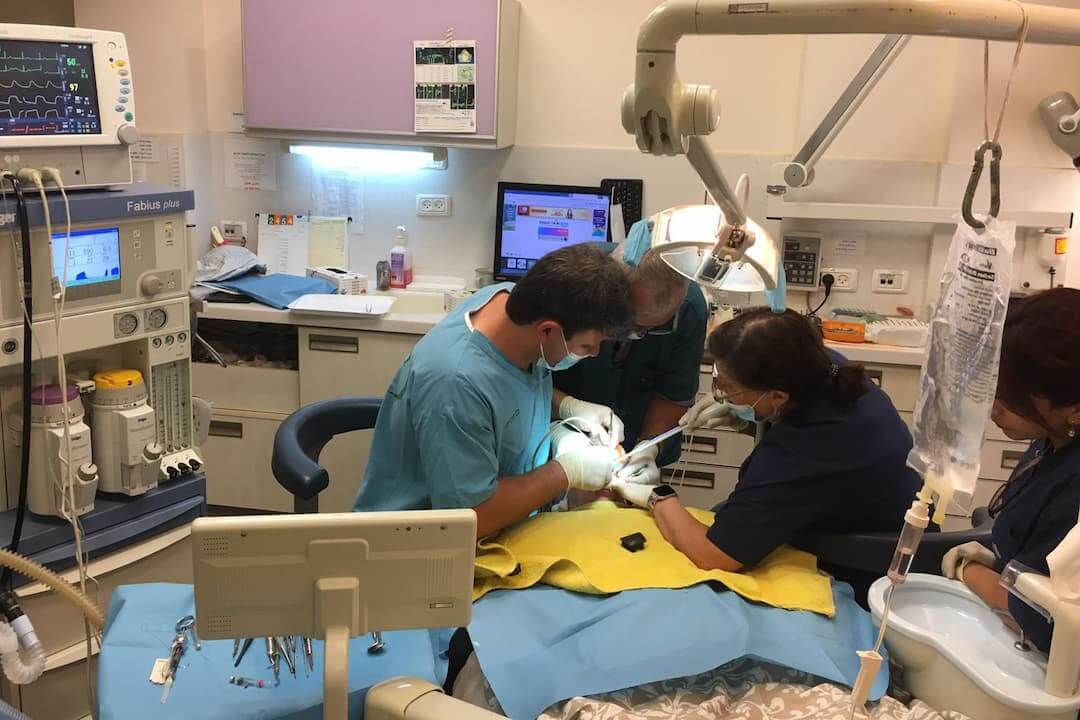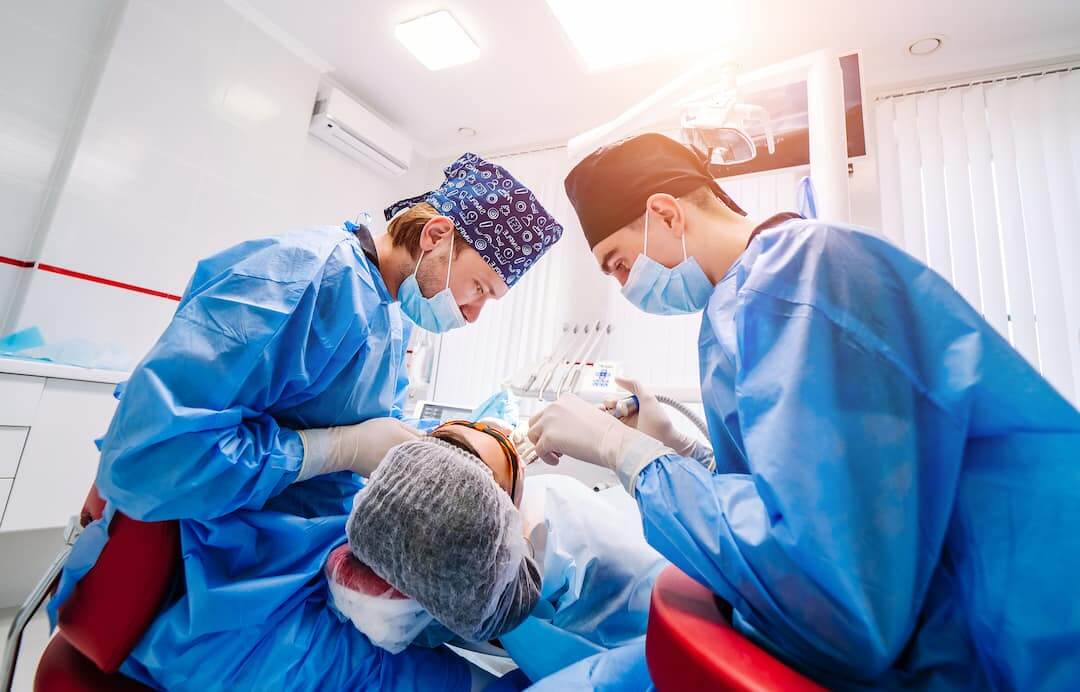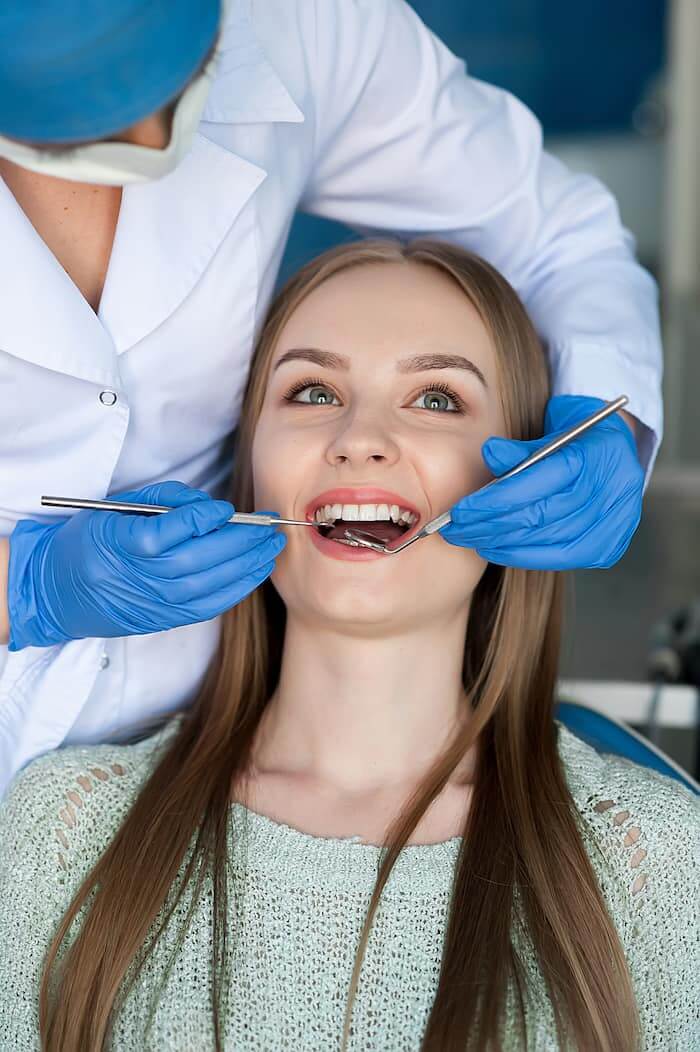Dental Treatment Under General Anesthesia
Dr. Evgeny Weinberg
DMD, MSc, PhD, Specialist in Periodontology


For most patients, especially those belonging to the older generation, a visit at the dentist is an unpleasant or even somewhat stressful event, and thus many tend to postpone their dental treatment as much as possible. The above is true even for people who take care of their general health, maintain their lifestyle and don’t neglect other health issues.
Instructions for treatment after oral surgery
In these cases, dental care can be provided under general anaesthesia or conscious sedation (numbing with oral or intravenous medication). Dental treatment under sedation can be carried out only by a dentist specifically licensed by the Ministry of Health.
The sedation or anaesthesia per se would be performed by an anaesthesiologist, who will monitor the patient’s vital signs while the dentist performs the treatment. In addition, the operatory should be equipped with special monitoring devices, as well as a gas and air exchange system, and the medical personnel should undergo special training (such as an advanced life support course.)
However, in older and younger patients alike, complex surgical procedures such as extractions of retained teeth, bone augmentation and dental implant placement, sinus lifting and other surgical procedures, may still cause significant mental stress due to the long duration of the treatment and the uniquely uncomfortable experience.
Younger patients, on the other hand, are used to much more comfortable treatments, where various local anaesthetic materials are used to provide a completely painless experience, together with tender and loving care by the dentist.
Mild sedation, deep sedation and general anesthesia:
- Mild sedation is a state of conscious numbing, as the patient can react to voice or touch. It can be compared with drunkenness – the patient responds and cooperates, but is not fully aware of his surroundings, and partially loses the sensation of time, similar to a night in a cocktail bar.
- Deep sedation is a deepening of a mild sedation towards a state of unconsciousness, as the patient can breathe independently and maintains diminished vital reflexes. In this state, the patient does not respond to voice or touch.
- General anesthesia is a state of complete unconsciousness when the patient can no longer maintain breathing and blood circulation and requires external assistance to remain alive. Most of us are familiar with general anesthesia from general surgery, usually performed in hospitals.
Like any other medical treatment, sedation and general anesthesia involve risks stemming from the narcotic materials in use. The Israel Ministry of Health states that dental treatment will be performed under sedation or general anesthesia only when these means are medically justified and the patient’s health allows their use. Therefore, in any case there should be a solid proof that the use of sedation or general anesthesia would allow an otherwise impossible dental treatment to be performed successfully.

When would the dentist consider performing dental treatment under sedation or general anesthesia?
- A specifically complex dental treatment, requiring numerous procedures in the same appointment.
- In people suffering of dental anxiety (fear of dental treatment).
- In people with an increased gag reflex.
- In people suffering of systemic/mental disorders, which prevent them from calmly sitting in the dental chair.
As was already mentioned above, dental treatment under sedation requires complex preparation of the clinic, proper equipment, rigorous licensing by the Ministry of Health, and training of professional personnel, capable of performing dental care under such conditions. The patient also must comply with several requirements so that the treatment would be completed safely. After treatments under mild or deep sedation, the patient must be monitored in a recovery room for an additional hour and will only be allowed to leave the clinic with an accompanying person.
Despite their complexity, conscious sedation and general anaesthesia allow the performance of lengthy surgical procedures without causing discomfort to the patient, and without the patient even remembering the treatment process. In addition, treating a calm (or sleeping) patient allows the dentist to complete his work in the best possible way, especially when numerous procedures are performed in a single appointment.

